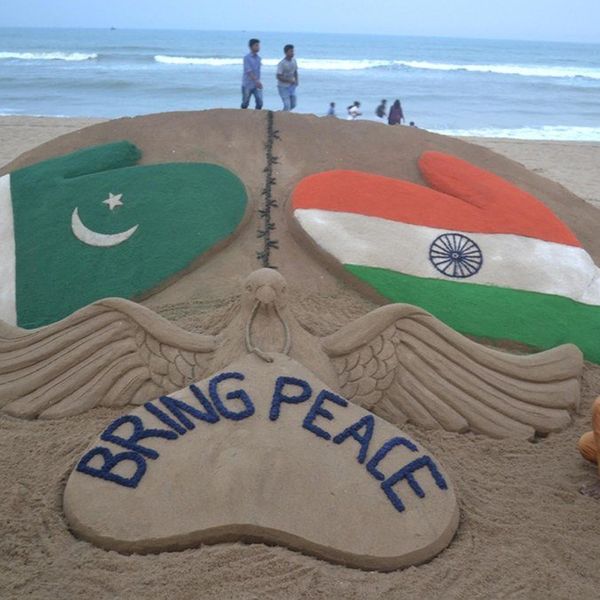Introduction
Sudan has been suspended in a state of nearly-constant civil war since 1956 when the country first gained independence from its colonial overseers. This region has witnessed some of the worst humanitarian atrocities of the last 50 years.
Background
The Sudanese conflict encompasses much of the late 20th century and early 21st century. The first iteration of this conflict arose in 1962, six years after Sudan gained its independence from Great Britain. This lasted until a peace agreement was signed in 1972, ceding a measure of autonomy to southern Sudan.
The Second Sudanese Civil War broke out between the Muslim North and the Christian South in 1983. This conflict engulfed the region for much of the next two decades, giving rise to some of most horrific bloodshed of this time period. The Second Civil War lasted until 2005 when a peace agreement was reached, and the South was given a path to autonomy.
In 2011, South Sudan voted for independence, becoming the world's newest nation. Yet this stability did not last long, as not even two years later, another civil war broke out between factions within South Sudan. This conflict continues today, largely under the radar of the rest of the world.
History of Genocide
In 2003, as the 2005 peace treaty was being negotiated, rebel groups in a western region of Sudan took up arms against the government in response to decades of marginalization and discrimination. The government responded with a vicious counter-insurgency campaign in which thousands were brutally murdered by government forces. According to the UN, over 300,000 individuals lost their lives in the response. This has become known as one of the worst genocides in modern history, with condemnation coming from every part of the globe. The 2003-2004 genocide in Darfur has continued to characterize the conflict in the eyes of the international community as the UN and other organizations work to solve the problem and bring peace to the region.
A New Nation and a Hope Destroyed
In 2005 the Comprehensive Peace Agreement (CPA) was signed, stipulating that the Christian South would live autonomously for six years and then hold a referendum on independence. In 2011 South Sudan voted for independence, becoming the world’s newest nation. The new state faced a wide variety of challenges and was quickly confronted with the reality of independence as tensions over oil sharing grew and were accompanied by rampant government corruption and instability.
By December of 2013, tensions had grown within South Sudan between supporters of the current president and supporters of his former vice president. The President represented the Dinka ethnic group while his Vice President represented the Nuer ethnic group. This tension once again plunged the region into civil war, leading to yet another humanitarian crisis for the region. This conflict continues on today, further affecting the lives of already-ravaged individuals with 2.2 million individuals facing food insecurity and another 1.8 million too afraid to return to their homes.
Causes and explanations
There are three main causes of this conflict:
- Colonial influence: Beginning in 1896, the regions that currently make up Sudan were subjected to British control. It was not until 1947 that these regions were unified into one nation that eventually gained its independence in 1956. This, in many ways, is what created this conflict in the first place. The 1947 unification of Sudan brought together several individual groups of dissimilar people under one national identity and expected them to operate as one cohesive unit. This, of course, has not happened. Forcing the concept of a nation state onto people who do not wish to be unified and often share animosities toward their neighbors has proven to be a detrimental policy that characterizes much of the post-colonial world.
- Religious animosities: A great deal of the Sudanese conflict finds its roots in the disagreements that exist between the Muslim North and the Christian South. This is often cited as the root conflict underlying in much of the disagreement between the two regions. This religious division, along with the ethnic divides that exist within these factions, creates a complex interconnected web of alliances and animosities.
- Oil: In 1978 oil was discovered in southern Sudan. Control over this vital natural resource serves as an underlying conflict that continues to drive much of the problems that exist within Sudan, especially in the current conflict that is taking place within oil-rich South Sudan. Each faction is hungry for oil, knowing that access to oil can increase power, fuel military strength and serve as a catalyst for international influence.
Humanitarian Crisis in Sudan
According to sources, nearly 2 million individuals lost their lives in the second Sudanese Civil War with the UN estimating nearly an extra 50,000 have died in the newest outbreak of war.
As of 2015, 3 million Sudanese have been internally displaced, 500,000 are living in refugee camps and another 6.9 million are in need of assistance.
If you would like more information on how to help support those affected by this conflict, please visit:
Larger Implications
Many future challenges face Sudan. Sudan continues to be one of the poorest and most underdeveloped regions of the world, having an unstable and corrupt governmental system as well as a crumbling infrastructure. Animosities run deep among the many factions that have fought over this area for the past half-century.
South Sudan lost any hope of stability because of its orientation toward corruption. According to experts, South Sudan is ripe for this type of conflict because “massive wealth from under the soil is exported out of the area with no discernible benefits to the local communities, a huge reservoir of uneducated teenage boys are vulnerable to recruitment by rebel commanders and opportunistic politicians who use them to further their own ambitions.” On top of this, South Sudan is faced with a dysfunctional party system and communities that continue to cling to the animosities that drove the previous two Civil Wars, both of which helped further fuel this conflict.
Going forward, Sudan must deal with the same type of problems that plague many African nations. The nation state was imposed on a region where communal loyalties rule while religion and greed drive a wedge between peoples, and war crimes cause resentments to flourish. Sudan must simultaneously deal with its past and focus on its future. Old wounds must be healed while transparency and accountability within the government are increased. The solution is not simple, and it will not be easy. The complexities of the conflict destroy any hope for a simple answer and necessitate unification among factions that wish not to be unified. This is ultimately the downfall of any attempt at peace in the region, as old grudges are not forgiven but are escalated, and opportunistic politicians drive the divides that already exist.





















